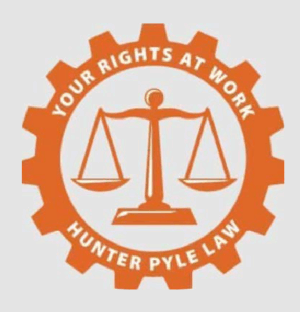Article III Standing and the U.S. Supreme Court
One of the big picture struggles playing out in federal courts is how much injury a plaintiff must suffer in order to have standing to sue under Article III of the U.S. Constitution. This issue is important because many laws provide rights to employees that are procedural in nature. For example, California Labor Code  section 226 requires companies to provide certain information on an employee’s pay stub. Similarly, California’s Investigative Consumer Reporting Agencies Act (ICRAA) requires that companies give notice before running a background check on an employee. A heightened standing requirement could impact the ability of employees to pursue such claims in federal court.
section 226 requires companies to provide certain information on an employee’s pay stub. Similarly, California’s Investigative Consumer Reporting Agencies Act (ICRAA) requires that companies give notice before running a background check on an employee. A heightened standing requirement could impact the ability of employees to pursue such claims in federal court.
Defense lawyers often use a two-pronged attack to raise Article III challenges in employment cases. First, they remove a case to federal court under the Class Action Fairness Act (CAFA). Then they argue that the case must be thrown out because, even though the defendant violated the law, there has been no harm within the meaning of Article III.
Our firm recently faced this type of attack in a case involving a company that requires its employees to use their cell phones to clock in and out of work. We sued under California Labor Code section 2802, which requires companies to reimburse employees for reasonable business expenses that the employees incur while performing their job duties. The defendant removed the case from Alameda County Superior Court, where we had filed it, to federal court. The defendant then filed a motion asking our federal judge to dismiss the case because the class members had suffered no harm that was recognizable in federal court. Before our judge ruled on that motion, however, we were able to convince her to return the case to state court, where it proceeds today.
In May 2016 the U.S. Supreme Court decided a case involving Article II standing: Spokeo v. Robins, 578 U.S. __ (2016). While not disastrous, Spokeo does contain some ominous language that may cause issues for plaintiffs in subsequent cases.
Spokeo is a website that provides information about people. Mr. Robins, the plaintiff in Spokeo, brought claims against that company under the Fair Credit Reporting Act (FCRA). According to Mr. Robins, Spokeo violated the FCRA by willfully failing to follow reasonable procedures to be certain that information about him on Spokeo’s website was accurate. Spokeo, in return, claimed that Mr. Robins had not suffered an injury that was sufficient for him to sue in federal court.
The Court’s three conservative justices, joined by Justices Breyer, Kagan, and Kennedy, used the Spokeo case to clarify the requirements for standing to sue in federal court. The majority opinion begins by revisiting the familiar three elements discussed in Lujan v. Defenders of Wildlife, 504 U.S. 555 (1992). Under that case, in order to have Article III standing, a plaintiff must have suffered:
- An injury in fact;
- That is fairly traceable to the challenged conduct of the defendant; and
- That is likely to be redressed by a favorable judicial decision.
The majority opinion then focuses on the first element. According to Lujan, a plaintiff must show that he suffered “an invasion of a legally protected interest” that is “concrete and particularized” and “actual or imminent.” 504 U.S. at 560. But what does the phrase “concrete and particularized” mean in the context of procedural rights, which give rise to “intangible” injuries?
First, the Court holds that an injury must be both “particularized” and “concrete.” To be particularized, it must affect the plaintiff in a personal and individual way. The violation of a procedural right would appear to meet this standard.
With respect to the “concrete” requirement, the majority opinion holds that an injury need not need be “tangible.” Rather, an “intangible” harm can be “concrete” for the purposes of standing. But under what circumstances? The Court notes that two factors are helpful in determining whether an intangible harm meets the requirement of injury in fact:
- Whether the intangible harm has a close relationship to a harm that has traditionally been regarded as providing a basis for a lawsuit in English or American courts; and
- Whether Congress has identified it as meeting minimum Article III requirements.
So we now know that these are the factors that courts should look to when analyzing “intangible harms” for the purpose of Article III standing. However, the Court did not apply them in Spokeo. Instead, it remanded to the Ninth Circuit to conduct that analysis. We will therefore have to wait for another day to see whether the rights created by FCRA survive this test.
Spokeo is ominous because, in closing, and in dicta, the majority opinion observes that the injury in fact requirement is not met every time a statute grants a person a right and authorizes them to sue to enforce that right. The majority then argues, again in dicta, that a “bare procedural violation” that results in no harm will not meet the requirements of Article III standing. The majority then provides the following example (among others) of a procedural violation that would not harm the plaintiff:
- A situation in which a consumer reporting agency did not provide the required notice to a user of the agency’s information, but the information was completely accurate.
The Court’s “no harm, no foul” analysis raises several concerns. First, it allows consumer reporting agencies to violate the law with impunity until they report inaccurate information. But by the time that an agency reports inaccurate information, the harm has been done. And it is very difficult to wipe information from the Internet once it has been placed there. Second, the Court’s analysis gives judges (both trial and appellate) wider discretion to dismiss cases because, in their opinion, the plaintiff has not suffered sufficient harm.
For these reasons, Spokeo is troubling. It will be interesting to see how the Ninth Circuit applies the factors set forth above to the facts of the case. We will continue to monitor this case, and to report on future cases exploring Article III standing.


